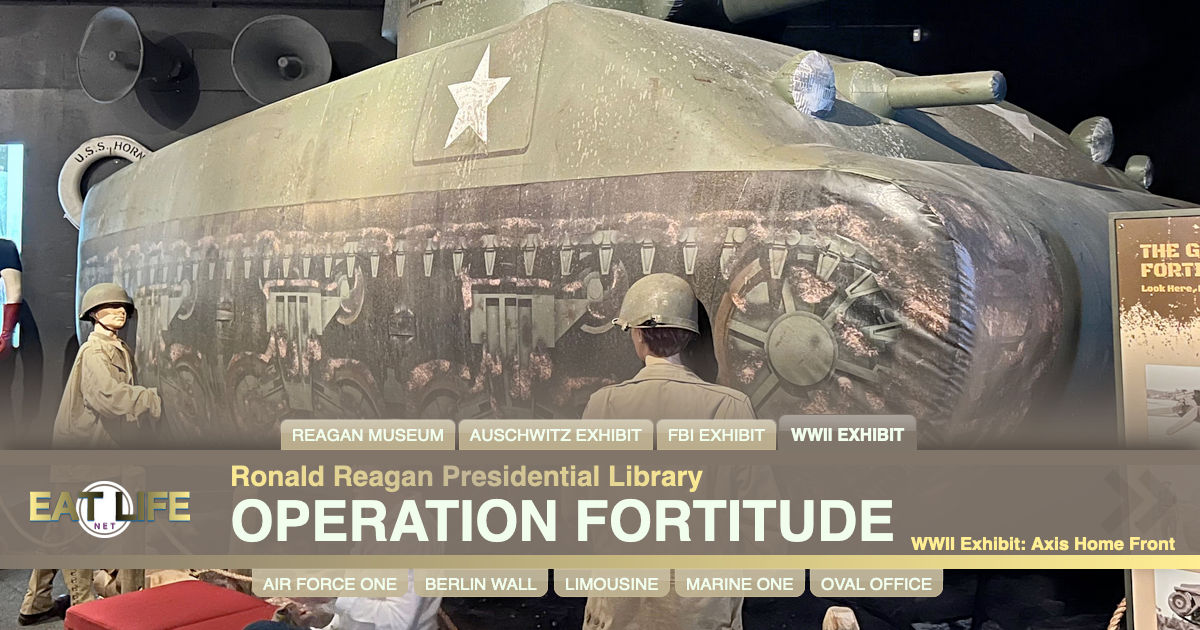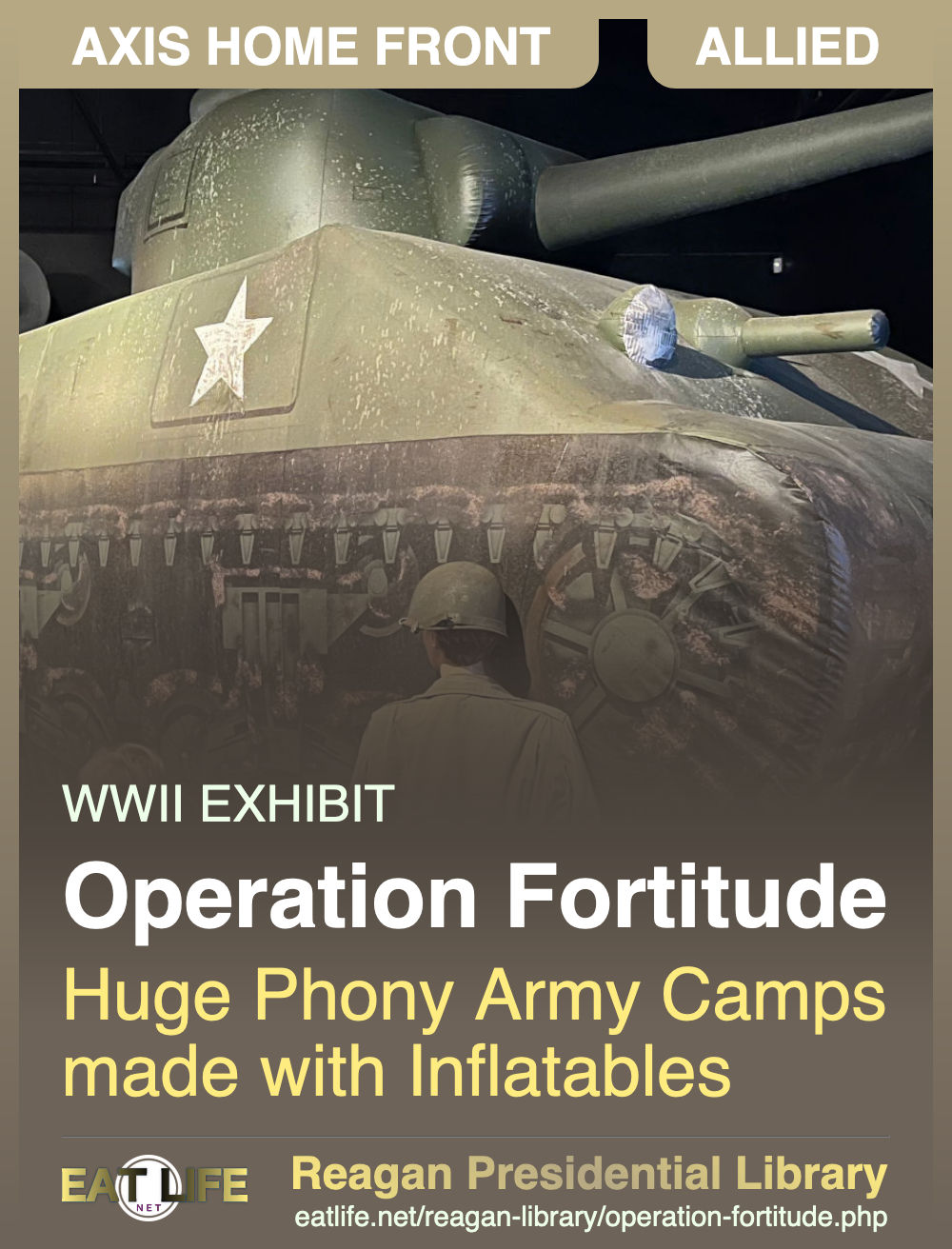They built up a fake inflatable Army in England to make the Germans think the Normandy Invasion was going to be in Norway.
It was to convince German High Command that the Normandy landings were just a diversion from the main attack, drawing enemy troops and attention away from the actual landing sites. This would force the Germans to not engage or to hold some of their forces back for the "real" invasion. After the Normandy Landings it forced the Germans to delay reinforcements to Normandy because they thought the big attack was still coming and that it would be in Norway.
They created the dummy airfields, army camps, and equipment. Sound engineers of the recorded and mixed the sound effects, and created phony radio traffic. They had a Ghost Army unit made up of 1100 members that had been artists, theater professionals, advertising professionals, and engineers in civilian life come up with ways to create other ways to mislead and confuse the enemy.
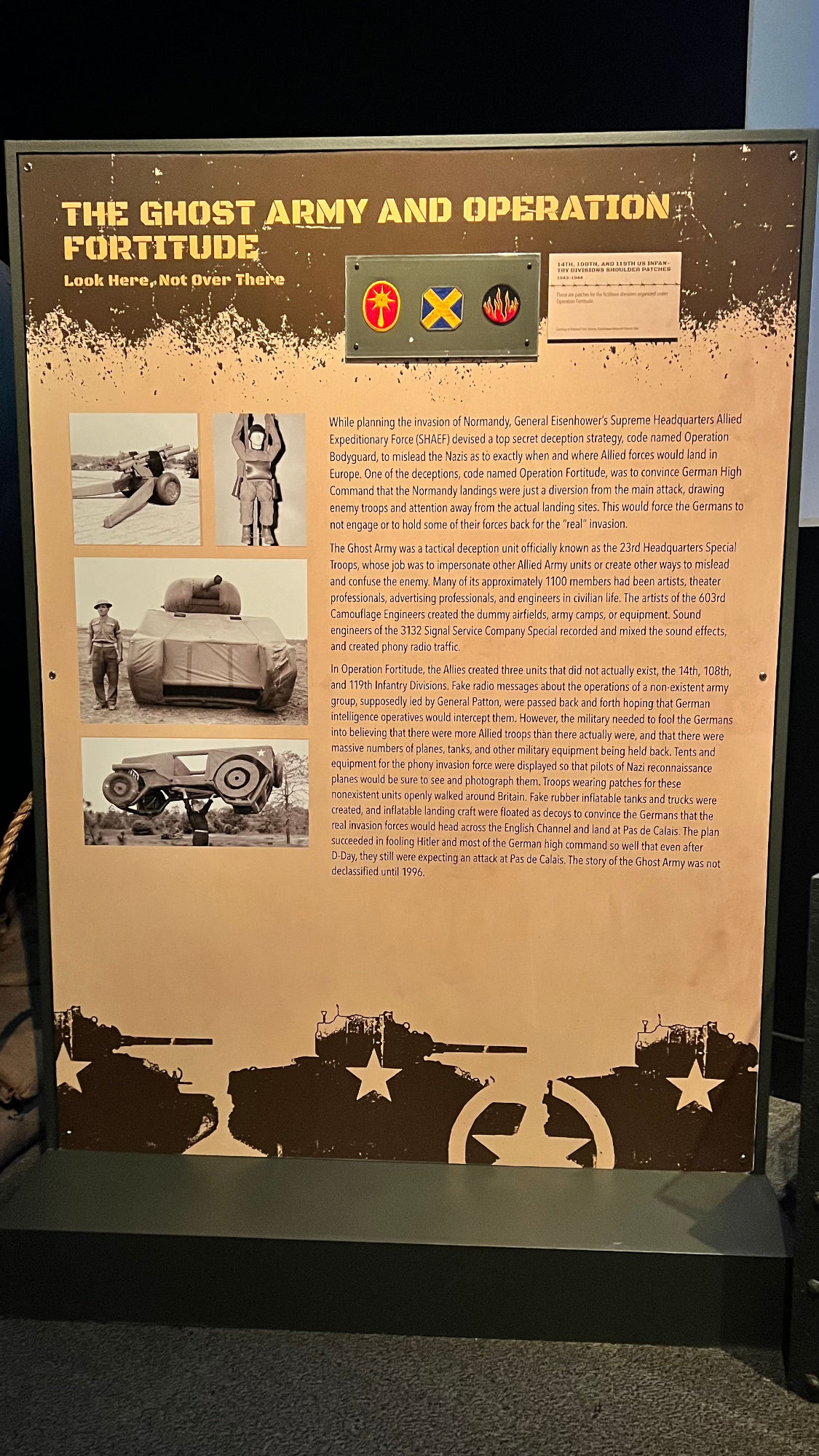
Look Here, Not Over There
While planning the invasion of Normandy, General Eisenhower's Supreme Headquarters Allied Expeditionary Force (SHAEF) devised a top secret deception strategy, code named Operation Bodyguard, to mislead the Nazis as to exactly when and where Allied forces would land in Europe. One of the deceptions, code named Operation Fortitude, was to convince German High Command that the Normandy landings were just a diversion from the main attack, drawing enemy troops and attention away from the actual landing sites. This would force the Germans to not engage or to hold some of their forces back for the "real" invasion.
The Ghost Army was a tactical deception unit officially known as the 23rd Headquarters Special Troops, whose job was to impersonate other Allied Army units or create other ways to mislead and confuse the enemy. Many of its approximately 1100 members had been artists, theater professionals, advertising professionals, and engineers in civilian life. The artists of the 603rd Camouflage Engineers created the dummy airfields, army camps, or equipment. Sound engineers of the 3132 Signal Service Company Special recorded and mixed the sound effects, and created phony radio traffic.
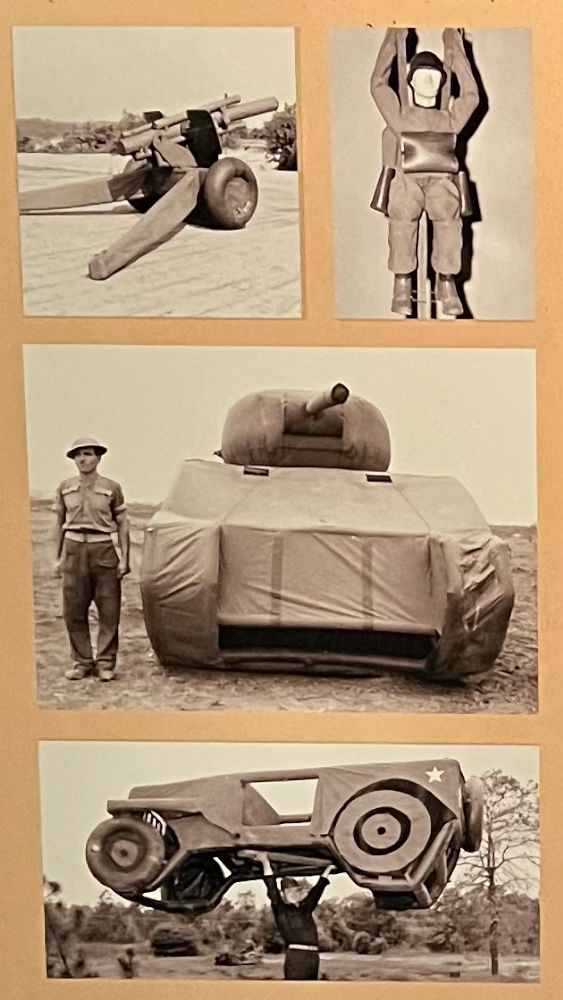 In Operation Fortitude, the Allies created three units that did not actually exist, the 14th, 108th, and 119th Infantry Divisions.
Fake radio messages about the operations of a non-existent army group, supposedly led by General Patton, were passed back and forth hoping that German intelligence operatives would intercept them.
However, the military needed to fool the Germans into believing that there were more Allied troops than there actually were, and that there were massive numbers of planes, tanks, and other military equipment being held back.
In Operation Fortitude, the Allies created three units that did not actually exist, the 14th, 108th, and 119th Infantry Divisions.
Fake radio messages about the operations of a non-existent army group, supposedly led by General Patton, were passed back and forth hoping that German intelligence operatives would intercept them.
However, the military needed to fool the Germans into believing that there were more Allied troops than there actually were, and that there were massive numbers of planes, tanks, and other military equipment being held back.
- Tents and equipment for the phony invasion force were displayed so that pilots of Nazi reconnaissance planes would be sure to see and photograph them.
- Troops wearing patches for these nonexistent units openly walked around Britain.
- Fake rubber inflatable tanks and trucks were created, and inflatable landing craft were floated as decoys to convince the Germans that the real invasion forces would head across the English Channel and land at Pas de Calais.
The plan succeeded in fooling Hitler and most of the German high command so well that even after D-Day, they still were expecting an attack at Pas de Calais. The story of the Ghost Army was not declassified until 1996.
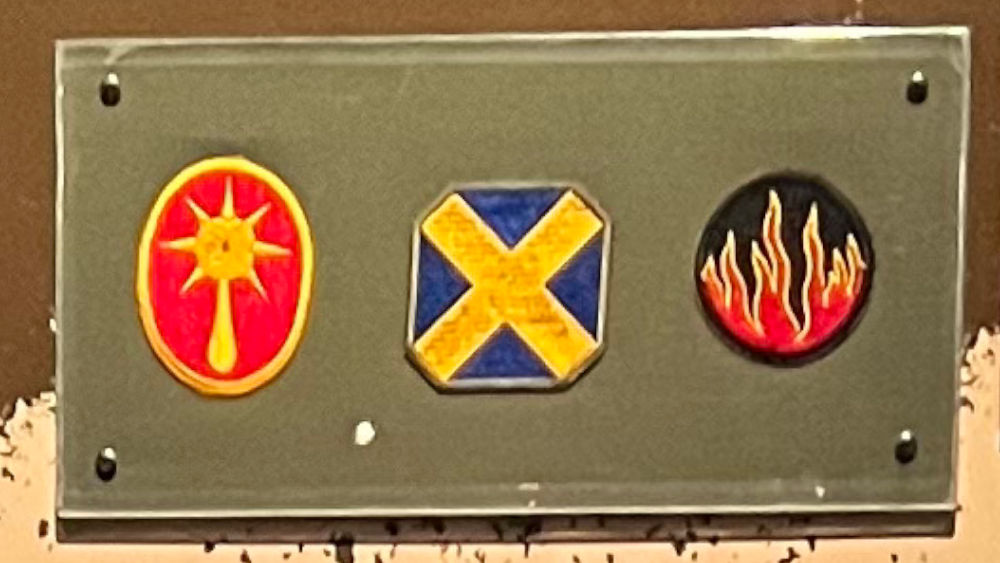
14th, 100th, and 119th US Infantry Divisions
These are the patches for the fictitious divisions organized under Operation Fortitude
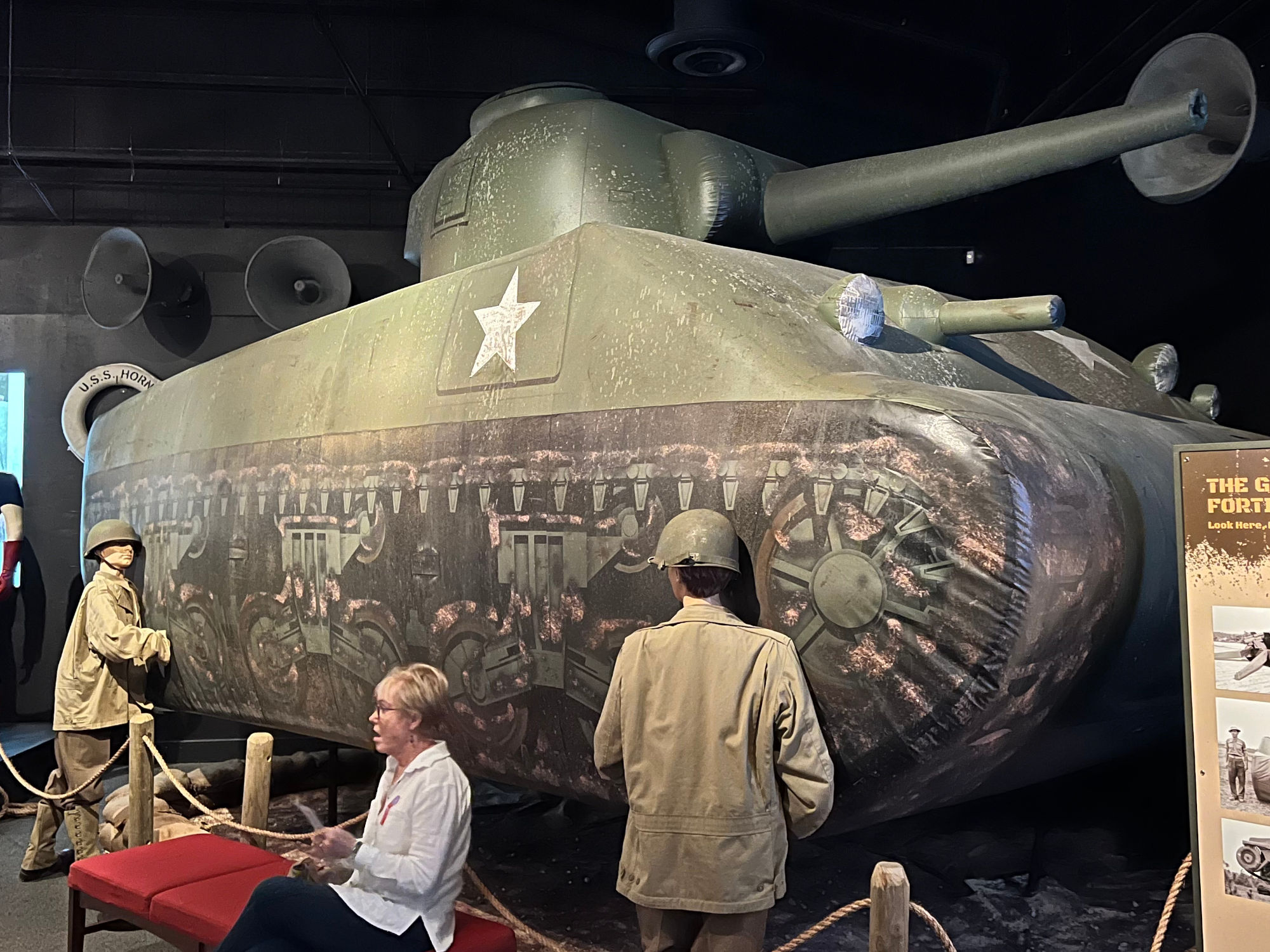
Operation Fortitude
WIKIPEDIAOperation Fortitude was a military deception operation by the Allied nations as part of Operation Bodyguard, an overall deception strategy during the buildup to the 1944 Normandy landings.
Fortitude was divided into two subplans, North and South, and had the aim of misleading the German High Command as to the location of the invasion.Both Fortitude plans involved the creation of phantom field armies (based in Edinburgh and southern England), which threatened Norway (Fortitude North) and Pas de Calais (Fortitude South). The operation was intended to divert Axis attention away from Normandy and, after the invasion on 6 June 1944, to delay reinforcement by convincing the Germans that the landings had been purely a diversionary attack.
Fortitude was one of the major elements of Operation Bodyguard, the overall Allied deception stratagem for the Normandy landings. Bodyguard's main objectives were to ensure that the Germans would not increase troop presence in Normandy and to do so by promoting the appearance that the Allies would attack in other locations. It consisted of a wide range of deceptions ranging across the European front, with Operation Fortitude representing the main effort to misdirect the Oberkommando der Wehrmacht (German High Command) to believe in specific mainland invasion objectives.
The problem facing the Allies was that France was the most logical choice for an invasion into mainland Europe. Therefore, the Allied high command had only a small geographical area across which to mislead the German defenses. Montgomery, commanding the Allied landing forces, knew that the crucial aspect of any invasion was the ability to enlarge a beachhead into a full front. He also had only 37 divisions at his command, compared to around 60 German formations. That meant that any deception would have to convince the German high command that the Allies were not committing their full forces into Normandy and so were holding many of those formations in reserve. After the landings, there would then need to be some way to delay the movement of German reserves to the Normandy beachhead to prevent a potentially-disastrous counterattack.
Operation Fortitude focused on creating invasion threats from the United Kingdom into various parts of Western Europe. The plan was eventually split into two parts, North and South. Fortitude South would focus on creating confusion about the Allied Channel crossing, and Fortitude North, staged out of Scotland, would introduce a threat to occupied Norway. Planning for Bodyguard overall came under the auspices of the London Controlling Section (LCS), a secret body that was set up to manage Allied deception strategy during the war. However, the execution of individual plans fell to the various theater commanders. In the case of Fortitude, it was Supreme Headquarters Allied Expeditionary Force (SHAEF), under General Dwight D. Eisenhower and specifically 21st Army Group, the invasion force, under the command of General Bernard Montgomery. A special section, Ops (B), was established at SHAEF to handle Fortitude, and Montgomery formed R Force under his command to handle the tactical elements of deception.






